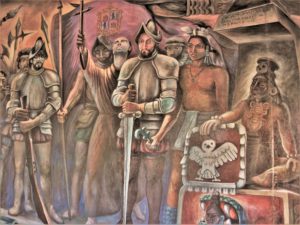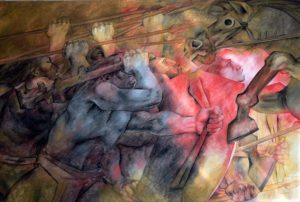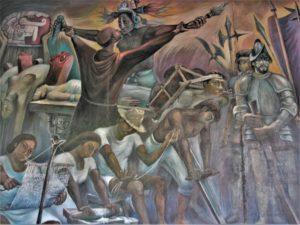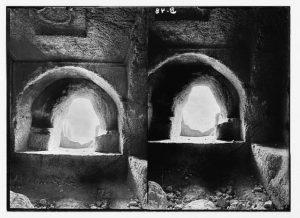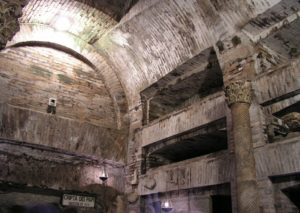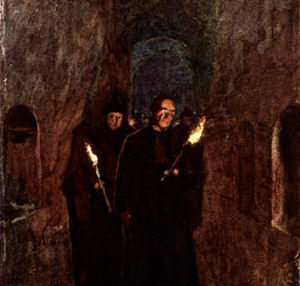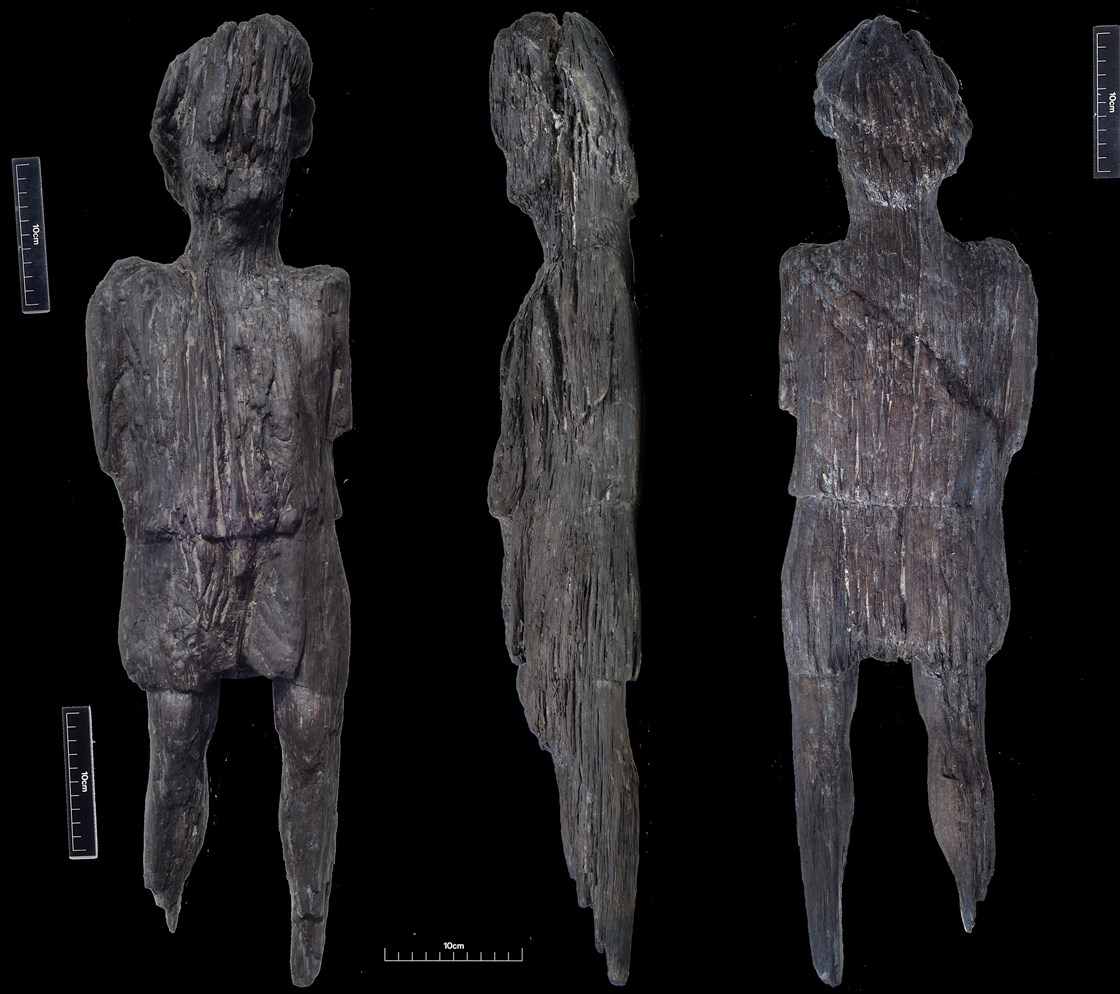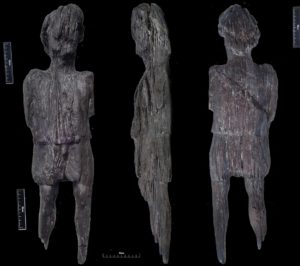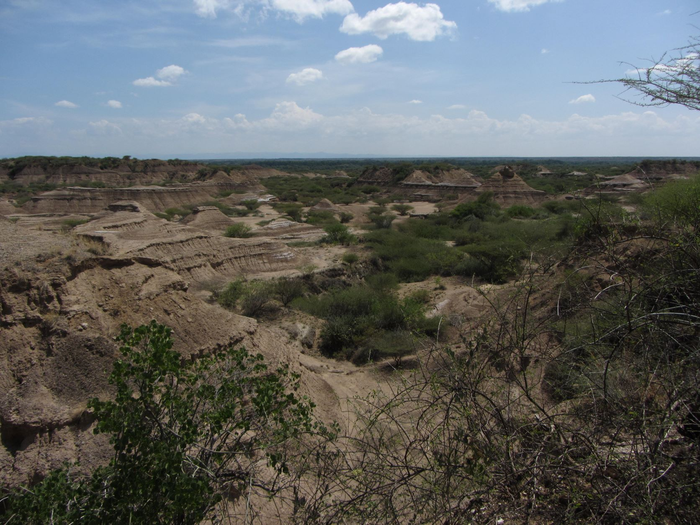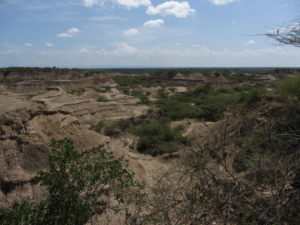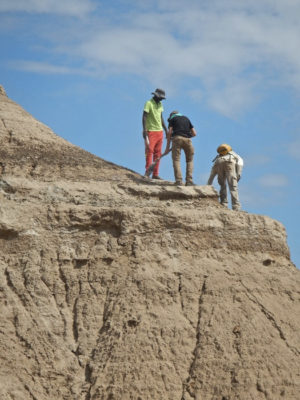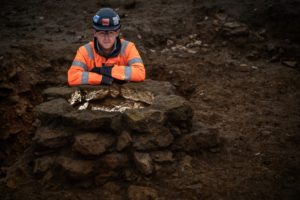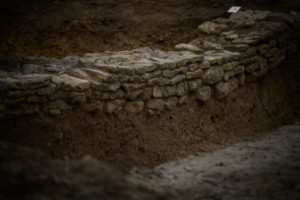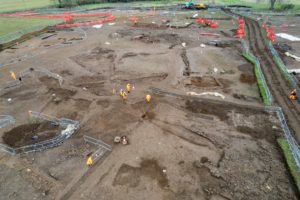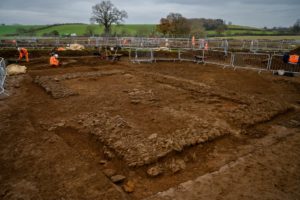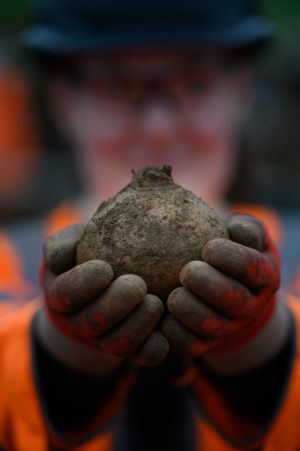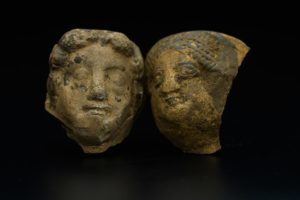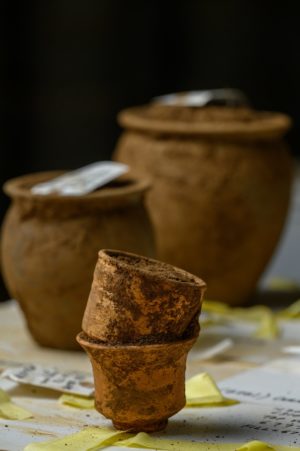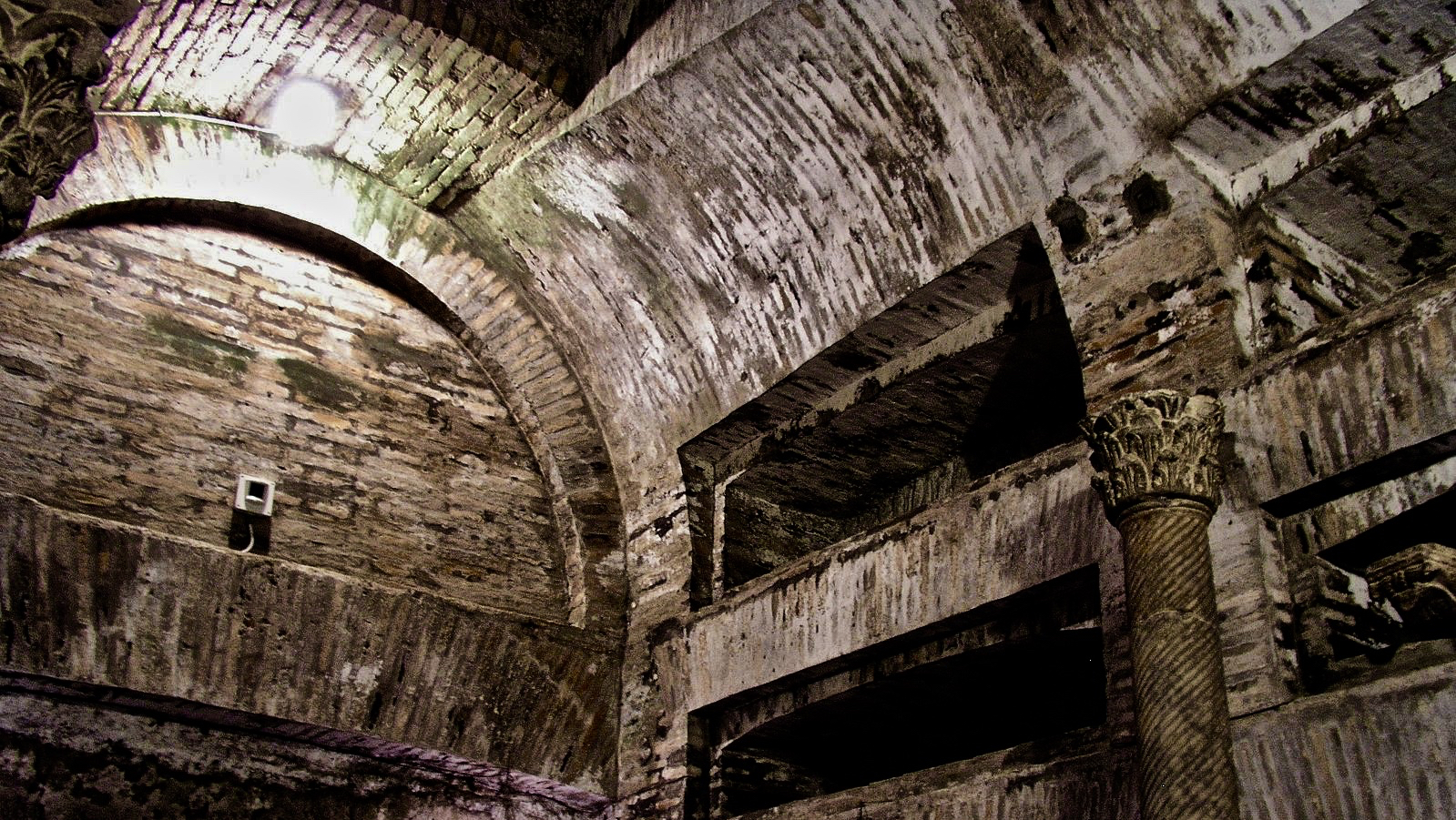
1. You and Camille wrote a brilliant, wide-ranging book, BELOW ROME: THE STORY OF THE CATACOMBS. You’ve both been to Italy around 100 times. Are the Roman catacombs on your top ten list?
Rome has been playing host to the world now for nearly 3,000 years. In antiquity, eager visitors from Syria, Egypt, Persia, Mesopotamia, Greece, Libya, Ilyria, the Jewish diaspora and elsewhere in the Mediterranean basin trekked the plethora of roads leading to Rome to see and marvel at the Eternal City’s fabled sights and sites. Today they come from the Americas, from all over Europe, from Scandinavia, from the Baltics, from Asia and Australia and lesser known points of the globe to behold, wide-eyed, the mighty Colosseum, the Forum, the Pantheon, the Spanish Steps, the piazzas, the fountains, the wonders of the Vatican, and whatever else there is on their top-ten list.
But beneath all this unexampled splendor of Rome there sprawls the dark, dank, eerie, labyrinthine, city of the dead – the catacombs. These are a story apart, a sui generis, terra sacra, which are not merely on any Roman top-ten list, but which constitute a must-see list solely of their own.
2. Is a hike on the Via Appia the best way to reach the Catacombs? What will one experience along the way?
The catacombs of the Jews and early Christians of Rome were burial grounds of course and, ipso facto, had to abide by the old Extra Muros law which ordered that all burials and entombments had to take place “outside the walls” of the city.
Thus pagans, Jews, and Christians alike placed their cemeteries or mausolea along the sides of the many highways leading out of Rome, such roads as the Via Cassia, the Via Flaminia, the Via Salaria, the Via Latina, the Via Tiburtina and so on.
Two of the most important Christian subterranean cemeteries – the Catacombs of St. Callistus and the Catacomb of St. Sebastian – together with two of the Jewish grounds, are to be found along the fourth century B.C.Via Appia.
A hike on the Appian Road is a never to be forgotten experience. Whether drenched in the soft golden sun of morning or suffused with the ethereal pink light of evening, the old road that leads south from Rome offers a peaceful alternative to the urban din and commotion endlessly taking place within the towering Aurelian Walls.
While the pulsating Eternal City with its countless charms never fails to cast its spell on all visitors, there comes a point in every Roman sojourn when one aches for a brief interlude of monastic quiet and stillness, for the sweet music of silence.
Camille and I learned long ago to satisfy that intermittent urge for a spell of tranquility by taking a long leisurely walk out along the side of that legendary road – its original paving stones still in place in some stretches – that melancholy yet lovely thoroughfare flanked by pagan tombs with their Latin epitaphs, by fragments of statues and columns, by fields of wildflowers, by graceful umbrella pines and stately cypresses, that scenic highway to Capua and beyond. Can there be any setting quite so beautiful and romantic as the lines of the Campagna Romana with its gentle inclination of its plains stretching out toward the soft contours of the purple Alban Hills? The scenery delights the eye, the history intrigues the mind, the antiquity stirs the soul, the stillness evokes reverie.
_________________________________
_________________________________
Twenty-three centuries have walked their way to Rome along these very stones, The vaunted Roman legions would march through here on the way back from yet another triumph in the East. In June of 1944 American troops trod this storied road on their way to liberate Rome.
3. What does the word “catacomb” mean? Can you tell us about the catacombs?
The term “catacomb” derives from the Greek words Kata (down) and kymbas (in the hollows), a very appropriate way of expressing how the Roman Jews and early Christians dug “down” to “hollow” out the subsoil of the countryside beyond the city walls, to provide extensive burial space for their deceased.
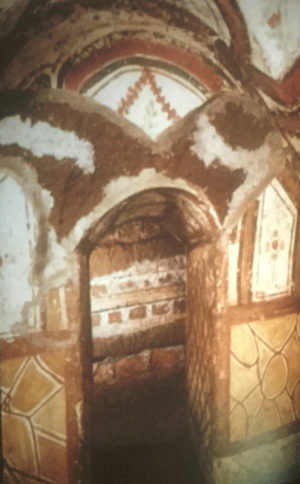
A family crypt (cubiculum).
The Christians of first century Rome buried their dead in public graveyards among the bodies of those few pagans who practiced inhumation, instead of the more common custom of cremation. At some point in the second century, however, the city’s Christians, many of whom were converts from Judaism, adopted the Jewish practice of subterranean tunneling for cemeterial purposes. Among all the monuments of the ancient world, the catacombs of Rome are, along with the southern town of Pompeii, the only ones which have survived the vicissitudes of time. Pompeii, buried in A.D. 79 by an eruption of the volcano Mount Vesuvius, reveals to us the public and private life of the pagan populace of the Roman Empire. The catacombs tell us a great deal of the life and times and customs of the early Christians. All these sites have retained their fascination and attraction for tourists and pilgrims, for scholars and especially archaeologists.
On many tombs in these underground cemeteries we see carved, etched, or painted some of the Christian primitive prayers and symbols, their love of family and fellow believers, their hope for eternal joy, the doctrines that inspired them. We see evidence of the new, rapidly spreading religion for which they risked—and often willingly sacrificed—their lives.
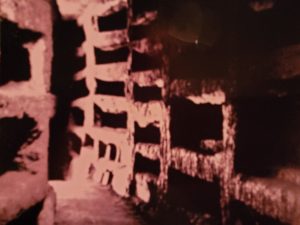
A typical catacomb gallery or tunnel.
In all, there were some sixty or more burial grounds developed on the outskirts of Rome. These were of varying size and capacity, some containing a few hundred bodies, others thousands, and one with as many as 90,000. Many of the catacombs had several levels to them.
The extent of this colossal network of tunnels by Rome’s early disciples of Christ is enormous and in many ways it rendered possible the existence, survival, and propagation of Christianity. In the past, some archaeologists thought that if the tunnels—more commonly called galleries —were to be placed end to end in a straight continuous line, they would stretch longer than the boot-shaped peninsula of Italy itself, that is to say about 750 miles. Modern researchers think that the total length of these galleries is more likely about half that.
4. The Jews have lived a long time in Rome and were the first to construct catacombs there. You mentioned how Julius Caesar recognized Judaism and that in Augustus’ reign eleven synagogues flourished. You mentioned that in Paul’s letter to the Romans, “Paul greets twenty four Jews, eighteen with Greek names, four with names in Latin, two in Hebrew.” Is it known how and when the Jews first arrived?
The Jewish community in Rome today is known to be the oldest such community in Europe. Thanks to the historian Josephus, we know that in 161 B.C. Judah Maccabee, the heroic Jewish warrior-statesman, sent a delegation to the Senate there in the hope of negotiating an alliance with Rome. It is thought that some of the diplomats stayed on and from them a small Jewish population took root on the banks of the Tiber.

An epitaph, in Greek, from a Jewish catacomb.
The following two decades must have seen another influx of Jewish migrants – probably from Alexandria – for by 139 B.C. they were causing quite a stir. Valerius Maximus, one of the least known classical Roman writers, tells of a general expulsion of the Jews in that year. The praetor Hispanus issued a decree banning them from Rome and from all of Italy, charging them with “aggressive proselytizing,” thereby undermining public worship of the pagan dieties. Apparently the ban by Hispanus was of short duration, for by the turn of the century Jews constituted ten percent of the city’s teeming population. By now, there were immigrants from the major Jewish centers of Asia Minor, the Land of Israel, Syria, Libya, Egypt and Greece.
In Jewish catacombs of that period, there are gravestones attesting to this diaspora. One mentions a Jew from Catania in Sicily, which was part of the Hellenization of southern Italy, or Magna Graecia. Another inscription honors a Jew from Numidia. A third mentions one from Rhodes.
Conditions improved greatly for Rome’s Jews when Julius Caesar came to power. He granted official recognition to Judaism as a legal religion, a policy followed by his successor, Caesar Augustus. So close did the Jews hold Caesar in their hearts that when he fell to the knives of Brutus and his co-conspirators they mourned his death in their week-long ancient rite of shivah.
5. So the Egyptians, Jews, and Christians wanted the body intact? But the Greeks and Romans cremated the body, right? I recall, for example, that you explained the word “cemetery,” which has Greek roots.
The Greek word coemeterion—“sleeping place”—implies that such land is designated as a burial gravesite and originally applied to the Roman catacombs. The word “catacomb” came into usage in the early Middle Ages as the generic term for all below ground graveyards. Up until then the Christians and the Jews referred to them as cemeteria subterranea. One does not need much knowledge of Latin to translate that phrase.
As far as the Christians were concerned, trusting in their religion’s promise of a “resurrection,” the deceased were not finished with life but merely “asleep” and waiting peacefully to be transferred to an eternal destination, one filled with joy.
6. How do you think the Egyptian afterlife (or others if you wish) differed from the Christian afterlife? The worship of Isis loomed large in Rome as Christianity was growing as well.
In Greek mythology the spirits of the dead would cross over the River Styx into the lower world called Hades. There the departed were doomed to an eternity of gloom and horror and dread, with zero prospect of ever escaping. One could only hope that upon dying, he or she would be deemed worthy of admission into an area of the lower world called the Eylisian Fields, a kind of paradise-like final resting place reserved for the heroic and the pure. The Romans’ prospects for an afterlife final resting place, in many ways corresponded to all this.
The ancient Eyptians’ view of death was that an afterlife most assuredly awaited, a rather pleasant one. Like the Christians, they were convinced of immortality and that death was not the cessation of life but rather a temporary phase. Thus the custom of mummification evolved which would preserve the body so that the soul could be soon re-infused into it upon reaching the other world.
Some of the entombment practices could remind one of the early Christian traditions. The bereaved Egyptian family would place, outside the burial chamber, household equipment and daily necessities of food and drink in the new life.
Inscriptions including traditional prayers and invocations were carved on the exterior in order to comfort, encourage, and assist the departed en route to the hereafter. Here again is additional similarity to Christian entombment rites. In place of the Egyptian provisions of food and drink, the Christian bereaved families would hold immediately after the funeral and entombment, on site in the catacombs, a light meal called a refrigerium to commemorate their loved one’s life. Today’s custom of a repast derives from that tradition.
Soon after the crypt was sealed, an epitaph would be etched into or painted on it and sometimes a brief prayer or even an invoking of the intercession of the martyrs and saints, especially Peter and Paul.
7. Do you see some common ground between Christianity and religion in ancient Egypt?
If one chose to, he or she could find some common characteristics between early Christianity and the cult of Isis.
Although in the Pauline view of Christianity, God was a male and Isis was a female, both religions worshiped a redeemer, a savior divinity. Isis was a savior goddess. Jesus was the Christian savior. Another conspicuous similarity between the two faiths is that both offered a one-on-one relationship with a deity, regardless of the background or status of the devotee. In both cults, penitents sought the cleansing of the guilt of their sins.
Both religious were particularly popular with the lower classes. Both offered magnificently solemn rituals that the believers could participate in. There may have been Isiac influence also on Christian iconography. For example, in art, Isis was frequently portrayed in a maternal pose, wearing a crown and holding lovingly in her arms her divine child, Horus. The Virgin Mary, haloed, is widely presented in catacomb frescoes holding her divine child Jesus.
The Egyptian religions erected imposing temples to their gods. The Egyptian cults were banished by Tiberius but publicly welcomed back to the Roman world by Caligula. And the Temple of Isis in Rome which was destroyed by fire in A.D. 80 was rebuilt by order of Domitian with a luxury and splendor still testified to in our day by two obelisks that once flanked the temple entrance and now serve as centerpieces for Roman piazzas, one in the square fronting the Pantheon, the other just a short distance away in Piazza Minerva.
As for the Christians, architecturally speaking, they had to wait for the liberating Edict of Milan by Constantine to erect such imposing temples as St. Peter’s Basilica in the Vatican, St. Paul’s Outside the Walls, and great Romanesque churches.
Of course, after all this, it must be said that there were many extreme dissimilarities between the two religions, as well. For example, the Isian religion, in most un-Christian fashion, was one of Mystery initiation. In the mid-second century A.D. the African barrister Lucivs Apuleius, himself an initiate of the Mysteries of Isis, wrote The Golden Ass, an entertaining allegorical tale of one man’s conversion from materialistic desire symbolized by his metamorphosis into an ass and accompanying bawdy adventures to the state of pure service of the sublime Goddess. The simple sacrament of Baptism admitted an aspirant into the Christian faith.
8. Can you tell us about Jesus’ burial in the tomb at Golgotha? And how does this connect to the practice of burial in Roman catacombs?
According to all four canonical gospel accounts, Jesus was placed in a tomb by a councilor of the Sanhedrin named Joseph of Arimathea before the eve of the sabbath. Jewish tradition forbade burial within the walls of a city, so the tomb must have been just outside one of the gates of Jerusalem, likely near to the site of the crucifixion, i.e. the hill called Calvary (from the Latin word calva, “baldhead” or “skull,” and also referred to as the dreaded and ugly Golgotha, from the Aramaic word for “skull”).
When Jesus finally expired after three hours of agony on the cross, Joseph, a devoted disciple of Jesus, a fact he kept secret out of fear of the Jewish authorities, went to the office of Pontius Pilate, the governor of the Roman province of Judaea, and sought permission to remove the body. Permission was granted.
With the help of a certain Nicodemus, the body was taken down and placed in a tomb cut in the cave rock. (All we know about Nicodemus on a personal level is from the Gospel of John (3:1) where he is described as a Pharisee.) Before placing the body on a limestone shelf or burial bed that was hewn from the wall of the tomb, the two volunteers wrapped it in linen cloth. John tells us that they “wrapped the body with spices in strips of linen”. In accordance with Jewish burial customs, spices were always applied to ward off odors and to pay homage to the deceased. Matthew says that after this, Joseph “rolled a huge stone in front of the entrance and went away.”
In their burial procedures down in the catacombs the early Christians emulated the entombment of Jesus in several ways. To receive the body they would carve out a niche (in Latin, loculus) in the wall of a gallery and after applying spices to the body they would clothe it with linen and lay it to rest.The aperture of the loculus would then be closed with brick, terra cotta tiles, or–if a family could afford it–a slab of polished marble.Whatever material was used was sealed air-tight by an outline of mortar, much the same way that putty is used to keep a window pane in place. So completely were the loculi sealed that there was never an offensive odor to contend with in the galleries.Small objects such as coins, bits of colored porcelain, or pieces of glass were at times pushed into the fresh mortar to serve as a means of identification.
______________________________
______________________________
9. What are some of the high points in the Christian story as to how Christianity spread from Judea?
Some of the early Christians of Rome had been among the soldiers of the cohort, commanded by a certain Cornelius, stationed in Palestine where they had heard the doctrines of the new faith from the lips of the apostles themselves and, excited by what they learned, asked to be baptized. Also, a delegation of Roman Jews had been at the time on a pilgrimage to the Great Temple in Jerusalem around the time of the first Pentecost, when the apostles took to the streets and squares and by-ways to preach the Gospel. Liking what they heard, they too embraced the tenets of Christianity and soon embarked for Rome.
Upon their return to the imperial capital all these recent converts zealously proselytized among friends, neighbors, and kin. We surmise all this from Acts, Chapter 2:
”When the day of Pentecost had come, they were all together in one place…Now there were staying in Jerusalem Jews, devout men from every nation under Heaven…and there were even visitors from Rome, both Jews and proselytes”
Even Jews from Rome! The phrase seems to leap from the page with astonishment.
Thus a small but devout community of Christians took root in the Eternal City. At first, the Christians were all regarded by the civil authorities as a harmless sect professing a foreign malignant superstition.
10. Can you characterize early Christians? You mentioned that even emperor Julian thought it was their kindness and love that helped Christianity spread.
One German historian, F. Uhlhorn claims that “before the coming of Christ the world was devoid of love”. This statement may be an exaggeration but nevertheless it points out the powerful impact Christianity had on the world and the attraction it held right from the start for people of every walk of life, of every rank and economic status, of both genders, of every national origin.
What struck the pagans most about the Christians in their midst was how they loved one another. How united they were, the support they extended to one another, how they shared their material goods with one another. The Roman authorities came to realize, too, by the second century that the appeal of Christianity was the conduct of its followers, how they were genuinely concerned for the welfare of not only their fellow believers, but also for complete strangers, for forgiveness, for the poor, the homeless, and the sick, for widows and orphans, for the sad and lonely, for the victims of cruelty and injustice, and especially for the dead. The philosophy of the Christian community seemed to be summed up in two words: Love and Charity.
Pagans, when they observed the customs and behavior of the Christians, were often heard to say, in astonishment: “Look how they love one another!” Christianity brought with it to Rome a new attitude, a new view as to what makes for a meaningful life, and that is: to do good for others. The Apostle James’ words on this subject were often quoted by priests in the early Church:
“My brothers and sisters, what good is it to profess faith without practicing it? Such faith has no power to save one, has it: If a brother or sister has nothing to wear and no food for the day, and you say to them;‘Good bye and good luck! Keep warm and eat well but do not meet their bodily needs, what good is that’. Such faith is thoroughly lifeless.”
James joined religion to action: service to God and to humanity.
Christians considered themselves as members of one family. This was so not only in Rome but throughout the cities, towns, and villages throughout the Empire. The faithful made it a point to get to know one another and call one another by their baptismal names. Every bishop felt obliged to get to know every member of his flock and determine the most needy among it. A fellow Christian passing through was welcome to join in a liturgical assembly.
The Emperor Julian (331-353) attributed the expansion of Christianity to all these kindnesses and especially the Church’s commitment to love and respect for the dead, ensuring a decent burial for all.
Indeed, Christians would go looking for bodies left unburried, especially in cities along the coast where victims of shipwrecks might be found scattered along the sands. The faithful, on such an occasion, would wash the body, dress it in fresh garments, then inter it nearby.
11. During various purges the Romans killed Christians. Roman authorities also made it possible for Christians to go free. There are many examples of saints, popes, and others (such as Apollonius) who chose to die rather than repudiate Christianity.
The historian Tacitus confirms that the first persecution – or purge – of the Christians was by the infamous emperor Nero, widely suspected of the fire of A.D. 64:
“In order to stifle the rumor that he had himself set Rome on fire, Nero falsely charged with the guilt and punished with the most fearful tortures the persons commonly called Christians … In their very deaths they were made the subject of sport, for they were covered with the hides of wild beasts and hounded to death by dogs, or nailed to crosses, or set fire to.”
Over the next two and a half-centuries the persecutions of the Christians waxed and waned with varying degrees of intensity and savagery. Some emperors took a tolerant view of them and their religious practices, while others, like Decius and Diocletian and Valerian, rounded them up for slaughter.
Trajan (98-117) is a good example of the more benign Roman rulers. We know for certain that by his time the Christian religion had been firmly established in most of the provinces of the Roman Empire, even though Nero’s decree banning the practice of the cult, under penalty of death, was still on the books.
In the year 111 Pliny the Younger, serving as the provincial governor of Bithynia in Asia Minor, wrote to his friend and boss, the Emperor Trajan, to express alarm at the vast multitude of Christians in his territory:
“The contagion of the Christian superstition is no longer confined to the cities. It has even invaded the villages and countryside and has seized upon people of every age, class, rank, and gender. Our temples are almost completely abandoned and the sacred rites honoring our gods utterly neglected.”
Well-bred and highly educated, Pliny was a true gentleman and surely anything but blood thirsty. He was simply concerned about the unrest of the pagan majority that this state of affairs was provoking, and looking for the emperor’s help in coming up with a peaceful and humane solution.
Trajan, a refined and erudite individual himself, wrote back that while he could not abnegate the laws still in effect that forbade the practice of Christianity, he too was most reluctant to crack down on its followers. So he toned down the law to eliminate some of its severity. He stated that anonymous charges against them must be completely disregarded, that if any one of them was caught taking part in Christian rituals he or she must be arrested but given three chances to acquit themselves by venerating the effigies of the pagan divinities and renouncing Christ. In so doing, the accused was to be set free. Above all, the emperor firmly stated, “Christiani non conquirendi sunt!” (There must be no round-ups of Christians!)
Despite the earnest efforts of the two leaders, however, many Christians were arrested and many, if not most, refused to pay homage to the deities of the Roman world and denounce their lord and consequently were put to death. St. Apollonius the Apologist was among those martyred.
So while each Christian arrested faced death, the alternative was so very easy; if he or she would only yield to the invitation and temptation to apostasy extended to them, they would then be released on their own recognizance.
12. Were the catacombs sacred ground? Did the Roman authorities respect it? You mentioned the concept of “violatio sepulchri.”
The Christians looked upon the subterranean burial grounds as truly sacred ground—terra sacra—for a number of reasons; The human body remains sacred always, even in death, they believed. Furthermore, among the great numbers of Christians buried in the catacombs—many of them—in the thousands—were martyrs for the faith who, the belief was, were surely in heaven—that is, they were saints. Their bodies alone hallowed the site. And a great many of the early popes chose to be entombed there.
The Roman authorities respected greatly every burial site be it pagan, Jewish, Christian or other. Even during the most ferocious persecutions on the part of the state, the Christian cemeteries enjoyed the protection of a law called Violatio Sepulchri, which forbade the desecration of any graveyard, tomb, mausoleum, and such.
13. Was the Cypress a symbol and tree of life in the catacombs? What other symbols and objects were important. What about graffiti?
In classical antiquity the cypress, particularly among the Etruscans, was a symbol of mourning and in the modern era it remains the principal cemetery tree in both the Muslim world and Europe. In the classical tradition, the cypress was associated with death and the underworld because it failed to regenerate when cut back too severely.
Since it is evergreen, the Christian view it as a symbol of everlasting life. Furthermore, a true Christian, it is said, believes that life begins when he or she dies.
Other symbols in the catacombs include the Fish, for the five letters that make up the Greek word ictus served as the initials for this prayer: Jesus Christ Son of God, Savior.
Also the monogram of Christ composed of two Greek letters – chi and rho – intertwined.

Two early Christian symbols – Alpha and Omega, and the anchor.
The alpha and omega, the first and last letters of the Greek alphabet signifying Christ as the beginning and end of all things.
The anchor, symbolizing the safe arrival of the soul at the harbor of eternity.
The phoenix, symbol of the Resurrection.
And lastly the dove and the olive branch, a symbol of the soul which flies in the peace of God..
As for graffiti, a custom evolved among the pilgrims to the catacombs in the early Middle Ages to etch in messages on the walls of the galleries to document their visit and perhaps a short prayer or invocation of a martyr’s intercession.
14. Aside from burial, what were the other uses of the catacombs?
Contrary to a widespread notion, the Christian cemeteries were not secret hiding places. The civil authorities knew very well of all these sites. The idea that the Christians took refuge or even lived for long periods of time down in the catacombs is entirely without merit. The cold and dampness of these dark tunnels – even in summer – could not be tolerated for any extended time.
One additional use besides burial, though, was for family visits to the graves of their loved ones. Another was for liturgical celebrations. Masses were occasionally offered, especially on the memorial days of the martyrs.
When Pope Paul VI was the young monsignor Giovanni Montini in the 1930’s, he was spiritual advisor and chaplain to the Roman branch of FUCI (the Italian Federation of University Students), a group not looked upon kindly by the Mussolini regime and often set upon by Fascist thugs, sometimes necessitating meetings to be held in one or another catacomb site.
15. Constantine defeated Maxentius – and it’s total change. Can you explain the Edict of Milan and the changes that took place afterwards?
According to an interview he years later gave to the Church historian Eusebius, Constantine on the eve of battle in 312 with the forces of the Emperor Maxentius, and encamped on the far side of the Milvian Bridge, saw a shining cross in the sky encircled by the words: “In hoc signo vinces,” (In this sign thou shalt conquer). Not knowing what to make of it, he instructed his soldiers to paint crosses on their shields and helmets and to replace the eagle on the army’s standard with a cross. The following day he crushed Maxentius and his legions and afterwards credited the Christians’ God for his triumph.
Soon Constantine began to pave the way for the beleaguered Christianity to become the official state religion. Just when be became a Christian at heart is open to discussion but he must have supported the idea of a Christian state early in his reign, for in 313 he and Licinius, the emperor of the eastern portion of the Empire, met in the northern city of Milan and thence proclaimed the historic Edict of Milan affording the Christians complete freedom of worship.
This action was followed by more and more privileges and even grants of state property. To Pope Miltiades he gave the Lateran tract of land in the southwest corner of Rome, just inside the Aurelian Walls. This property had belonged in the first century to the nobleman Plautus Lateranus, who was part of a conspiracy to assassinate Nero. The plot was uncovered, the conspirators arrested, and their estates confiscated. On this location, Constantine urged the Bishop of Rome to erect his personal church, i.e. his cathedral. Completed around 326, the cathedral was named for the Savior. Some centuries later it was renamed for the two St. Johns, the Baptist and the Evangelist, and ever since has been called the Basilica of St. John Laterano. To this day it remains the cathedral of Rome.
Constantine also commissioned the building of a basilica over the grave of St. Peter in the Vatican meadows, which was also heretofore state property, and another over the grave of St. Paul, outside the walls on the Via Ostiense.
16. Can you mention the life and death of Saint Peter and Paul, Sebastian, Agnes and others that are of great importance? Where were they interred?
In the year 67 the apostle Peter, the first bishop of Rome, was crucified in the Circus, i.e. race course, of Nero across the Tiber. His remains were claimed by his followers and laid to rest in a cemetery adjacent to the stadium in an area called Ager Vaticanus—the Vatican Meadows. That same fateful day, tradition says, Paul was taken by a small execution squad to a spot along the road to the seaport of Ostia and decapitated. Another group of Christians saw to it that he received a proper burial in a nearby necropolis. The final resting place of both leaders of the Christian community were marked and became sites of daily veneration by the faithful. When Constantine came to power in 312 and issued his Edict of Milan the following year, he ordered a great basilica to be built over each grave.
The two apostles’ connection with the catacombs is due to stories that have been passed on down through the centuries. When word of the apostles’ death and burial reached the Eastern churches, a delegation of their members journeyed to Rome on a mission to exhume the saints’ relics and bring them back to the land where the two holy men had begun their evangelical work.
Hearing of the plan, the Roman Christians secretly transferred the bodies to the cemeterium ad catacumbas which would in later times be called the Catacomb of St. Sebastian.
There the precious bones lay for a year and seven months, causing the brethren to refer to the site as the Memoria Apostolorum. After this stretch of time the bodies were taken back to their original places of sepulture which once again became focal points of pilgrimage.
Sebastian was an officer in the Roman army with the prestigious rank, Tribune of the First Praetorian Cohert. With the persecution of Christians under Valerian raging in the mid third century, Sebastian courageously stood up to the tyrant and did everything he could to save Christians and to ease their sufferings. Daily he would smuggle food and clothing to the imprisoned and find places of refuge for those being sought by the authorities. He then became a convert.
When Valerian learned of all this he flew into a rage and had the humanitarian officer executed. The martyred Sebastian was laid to rest in the subterranean cemetery ad catacumbas, which would soon be renamed for him.
Agnes was a lovely girl just twelve years old when she gave her life for the faith under the murderous regime of Diocletian in 304. Her martyrdom deeply moved the community of believers, and ecclesiastical writers across the centuries since have portrayed her as the symbol of youthful purity and the patron saint of young girls. She lies in eternal repose in the catacomb subsequently named for her, outside the walls along the Via Nomentana.
Cecilia was a pious teen-aged daughter of an affluent Christian family. A devout Christian from childhood, the much beloved young woman was sentenced to death by the executioner’s axe. Roman law stipulated that if a condemned person were to survive three blows of the axe, he or she was to be set free. Cecilia, severely wounded, nonetheless came through the ordeal alive. For several days she lingered, blood oozing from the deep neck wound. As she lay dying she would occasionally come out of her coma. In these few lucid moments she would softly sing hymns to Christ. (For this reason she came to be the patron saint of music.) Upon her passing, Cecilia was placed in a crypt in the Catacombs of St. Callistus.
These are but five saints of a great number who are associated in some way with the catacombs.
17. Can you tell us about the most famous catacombs, especially the one with the nine popes?
The most renowned of all the subterranean Christian cemeteries, in my view, would be the Catacombs of Saint Callistus for its cappella dei papi, chapel of the popes. In this small chamber down on the first level of graves were buried nine of the early popes: Pontianus, Anterus, Fabianus, Lucius, Stephen, SixtusII, Dionysius, Felix and Eutichianus.
Other prominently known burial grounds are the Catacomb of St. Sebastian on the ancient Appian Way; the Catacomb of St. Domitilla on the Via delle Sette Chiese; the Catacomb of St. Agnes on the Via Nomentana; and the Catacomb of Priscilla out on the old salt road, the Via Salaria.
__________________________________
__________________________________
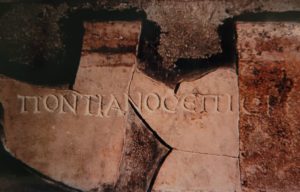
The loculus of Pontianus in the Chapel of the Popes.
__________________________________
18. You brought out the personality and spirit of the early popes, such as Damasus who loved poetry and put great effort into safeguarding the catacombs. Can you tell us about some of the early popes?
In the Catholic tradition, St. Peter was the first Bishop of Rome. The word pope came into use some time in the next century. It is the anglicized form of the Greek word papa or father. Early on every bishop throughout the Christian world was addressed by this affectionate term, but it was not long before it was reserved strictly for the Bishop of Rome. It is easy to see that the Greek form gives us our words papal and papacy.
Pope Linus succeeded Peter and began and completed his reign in the same ugly climate that caused the brutal end of his predecessor. He too was martyred.
Cletus succeeded Linus. During his pontificate he divided the city of Rome into twenty-five parishes.
Clement, the third successor of St. Peter and hence the fourth pope, is best known for his letter known as I Clement, the most important first century Christian Document outside the New Testament. It was treated by some in the ancient Church as if it were in fact part of the New Testament canon. Clement, we know too, lived a few blocks down from the newly built Flavian Amphitheater which the world prefers to call “The Colosseum”, and that he allowed his home to be used as a domus ecclesiae, house church. It still exists.
19. So war, bandits. and disease caused the catacombs to be sealed off. Around when did that happen? Which catacombs remained opened? And which ones had to be rediscovered? Is the situation with the catacombs like Pompeii with more things waiting to be uncovered?
The peacetime of Christians and indeed of all inhabitants of Rome was shattered at the onset of the fifth century. In 408, Alaric and his West Goths laid siege to Rome and in 410 breached the walls and ravaged and plundered the city. This would be the first of many invasions to come.
Sometimes the rampagers even looted, desecrated, and damaged the catacombs across the following centuries.
The year 750 brought the unwelcome Aistulf and his Lombards. After sacking Rome, the invaders fanned out across the campagna seeking accesses to every underground cemetery to gain whatever they thought could be of any value, particularly the remains of martyrs. They carted away countless saintly relics for which there was a busy market across Christian Europe. It seems that bishops, abbots, and pastors hoping to lend more prestige to their cathedrals, their monasteries, their churches by being able to claim that the moral remains of a martyr were reposing beneath their altars – were the most eager customers.
These outrages left the catacombs in a state of devastation and now for the most part pilgrimages stopped and the catacombs fell into utter ruin and decay. The one one of these holy sites to remain known and occasionally visited during the long dreary Middle Ages was that of St. Sebastian. And in time this site too, was forsaken and forgotten.
In the autumn of 1578, however, something occurred just outside the ancient brick walls of Rome, along the Via Salaria, that precipitated a wave of excitement that washed over the Eternal City and ultimately paved the way for Christians ever after to examine, close up, their religious roots. It was at that time that workers digging for pozzolana in the fields of the lovely and serene Roman countryside were daily and accidentally coming upon entrances and light shafts – for long centuries concealed from view – that led down to a subterranean cemetery of the earliest Christians. (This was later determined to be the Catacombs of St. Priscilla.)
Like Pompeii and Herculaneum, the Roman catacombs have troves of treasures waiting to be brought to light.
20. In times past, it might have been easy to get lost down there in the catacombs, right? It’s like any huge, dark winding space. I was there some years ago. I recall that you mentioned visits by St. Jerome (as a child), Goethe, Charles Dickens and others.
Some catacombs go as far as five levels deep into the subsoil. When all the burial space of the original corridor was used up, another would be excavated at a right angle to it, and when that was filled still another gallery was dug and then another and another and so on, resulting ultimately in a complex and confusing network of intersecting tunnels – a virtual labyrinth.
When all the available space on that first level was exhausted, the fossores, i.e. grave diggers, would break through the floor and bore a shaft down further into the soil and start a second level of tunnels beneath the original. In some catacombs there are as many as five levels, reaching in all a depth of seventy feet or more below the surface. Thus the farther down one goes, the newer the graves will be.
When the Jews and early Christians descended into one of these cemeteries for a funeral or a visit to the final resting place of a dear one, they needed the services of a guide who had an expert familiarity with the maze. It was indeed easy and most perilous to get lost in the jumble of passage ways. Even in our time, visitors to these depths are exhorted to “stay close to your guide”.
In Goethe’s time in Rome, 1788, of course there was still no electric lighting. Visitors had to trudge along the solemn subterranean passages accompanied by a well-versed guide, all holding burning candles to illuminate their way. The German poet and dramatist had this to say about his experience: “My visit to the catacomb, however, was not much of a success. I had hardly taken a step into that airless and foreboding place before I began to feel uncomfortable and insecure, and I immediately returned to the light of day and the fresh air and waited, in that unknown and remote corner of the city, for the return of the others.”
_________________________________
_________________________________
Charles Dickens’ reaction was similar: “A giant friar with a wild bright eye, was our only guide down into this profound and dreadful place. The narrow ways and openings, hither and thither, coupled with the dead and heavy air, soon blotted out, in all of us, any recollection of the route by which we had come; and I could not help thinking, ‘Good Heaven, if in a sudden fit of madness, he should dash the torches out, or if he should be seized with a spell, what would become of us!’”
My family and I can readily relate to Dickens’ alarm at the awful possibilities. One evening in the summer of 1970, after public visiting hours, a guide at the Catacombs of St. Calisstus, Joseph Mascarenhas, a religious brother in the Salesian order which manages that cemetery and was by now a dear family friend, took us down deep into the third and fourth levels – only the first and second are accessible to the public. I was doing research as a Fulbright Scholar at the American Academy in Rome on the Greek and Latin epitaphs of the catacombs and Brother Joe wished to afford me the rare privilege of copying and translating those on the lower levels. Our only illumination was Brother Joe’s lantern. After our ascent to the surface I learned that my wife Camille and our little sons, Frank, Ronald, and John – had been having the same thought as Dickens: “If anything happens to Brother Joe what will become of us?!”
21. Can you tell us about those archeologists of the catacombs. Antonio Bosio and Giovanni Battista De Rossi?
An enormous debt of gratitude for the reemergence of the catacomb sites after their long hiatus in the Middle Ages is due to a young man with a keen intellect and an unquenchable curiosity, Antonio Bosio (1575-1629). Born on the island of Malta, he was early on sent to Rome to live with an uncle who happened to be that island nation’s ambassador to the Holy See. Scholarly by nature, he pursued studies in literature, philosophy, and law at the University of Rome.
His heart and thoughts, however, were elsewhere. He could not get his mind off the wonders of his Christian heritage waiting to be explored deep beneath the earth. At age 18 he gave up his studies to devote himself full-time to systematically probing the galleries of the newly rediscovered cemetery of St. Priscilla and to poring over tomes of early Christian literature and the Acts of the Martyrs in an effort to learn the locations of other catacombs on the outskirts of Rome in every direction.
He would set out for places indicated in these sources and scour the land for hidden entrance shafts. He kept voluminous notes on his findings, made sketches of the galleries, loculi and cubicula (small chambers), translated Latin and Greek epitaphs into Italian. His magnum opus, Roma Sotteranea, was published in 1632, three years after his passing. Bosio came to be called, “The Columbus of the Catacombs”.
Some two centuries later another genius comes along who was destined to be a second Bosio. Giovanni Battista De Rossi, a twenty three-year-old Roman recently graduated from the university with a major in archaeology, had a particular interest in the subterranean cemeteries of the early Christians.
On a sultry summer afternoon of 1844, he and his kid brother Michele, aged ten, walking through a vineyard that lay between the Via Appia and the Via Ardeatina just outside the city walls, came upon a pile of fragments of polished marble neatly engraved with Latin words. Giovanni asks the landowner for permission to gather the chunks and take them home. Thinking the objects worthless, the owner readily concedes.
Back home, after weeks of jigsawing the pieces and their engraved words together, De Rossi excitedly concludes that they are from epitaphs of the catacomb name for St. Callistus, an early pope, the whereabouts of which had still been unknown since the Middle Ages but about which Giovanni had heard and read in his student days.
He devoted the rest of his life to bringing to light and restoring order to what is today considered the major and largest catacomb of them all, St. Callistus.
22. Do you have any favorite movies that depict Roman catacombs or any Roman ruins? Do you have a favorite quote from Christianity?
I am not aware of any Hollywood production that covers, in even the slightest way, the Roman catacombs. There may exist some television documentaries on them. Perhaps Channel EWTN, a Catholic outlet would be worth checking.
For a quote on Christianity, I have always favored one by Benjamin Franklin. While the word itself is not mentioned, the allusion is crystal clear:
“As to Jesus of Nazareth, I think the system of morals and his religion as he left them to us, is the best the world ever saw, or is likely to ever see.”
Ah Rome. Eternal Rome. How Camille and I never cease to wonder at the wonder of it all.
_______________________________
Note: The fascinating and informative book, Below Rome: The Story of the Catacombs, by Frank and Camille Korn is available at Amazon.
_______________________________
About the interviewer
As a child, Richard Marranca was given books on history, myth and religion that ignited his interests. When he was seven, he went with his mom, grandmother and aunt to Italy and Switzerland – a trip that lasted a lifetime. During his doctoral studies at New York University, he spent a semester in Greece with a side project in Egypt. Around the midpoint of his career, he also was awarded a Fulbright to teach at LMU Munich (and for two years was president of NJ Fulbright chapter), as well as six NEH summer seminars, including Andean Worlds in Peru/Bolivia; Concord MA; and High Plains Indians of Nebraska.
For Richard, teaching and writing go together; he teaches a variety of humanities and English courses. His most recent publications include stories in Coneflower Café, The Raven’s Perch and Months to Years Magazine; interviews in Popular Archaeology and Minerva; and poetry in the Paterson Literary Review. His manuscript, Speaking of the Dead, has been accepted for publication by Blydyn Square Books in NJ.
The latest project: His wife Renah, daughter Hera and Richard create videos, the latest being Childe Hera’s World on YouTube; so far it’s mostly travel videos, but this year the highlight was Coronavirus, A Child’s View.
His story, Affirmative Action, published in Coneflower Review, was recently nominated for a Pushcart Prize.
Richard wishes to thank his wife Renah and Bridget Briant for their help with this interview.
_______________________________
Advertisement
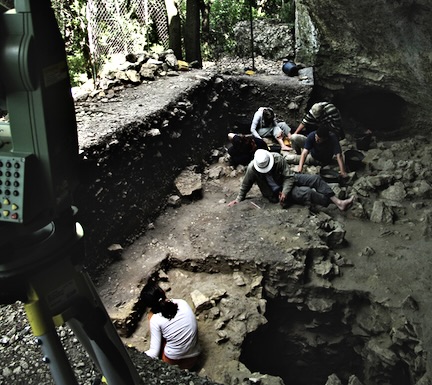
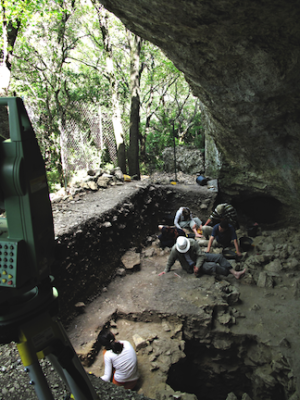
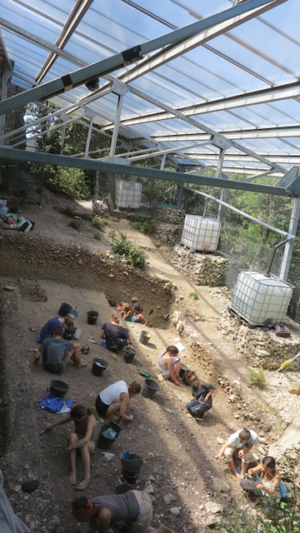
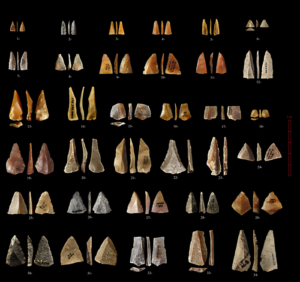
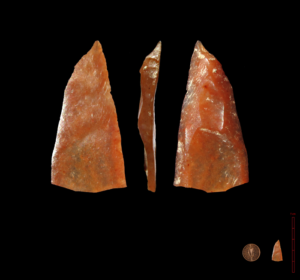

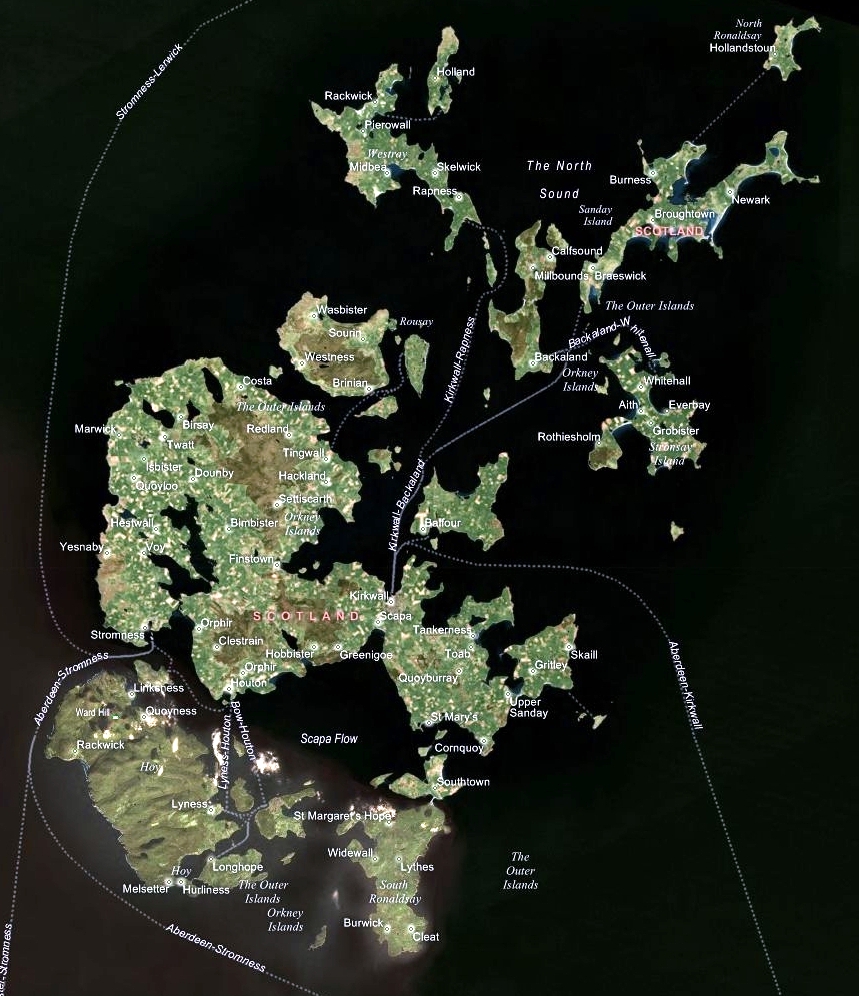
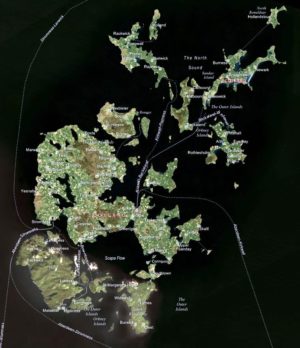

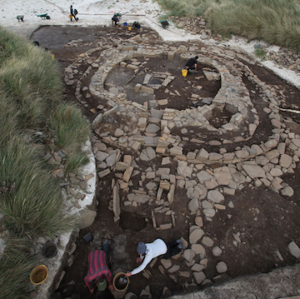
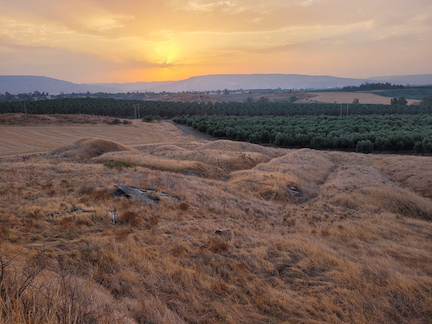
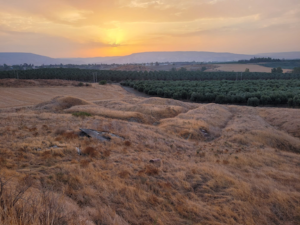
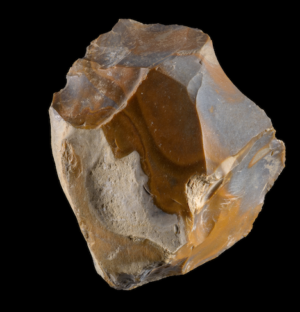

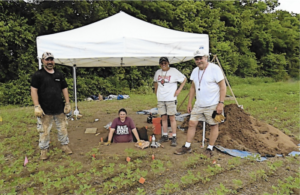
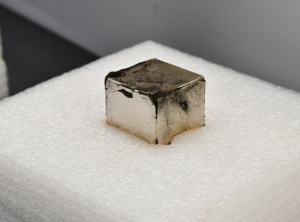
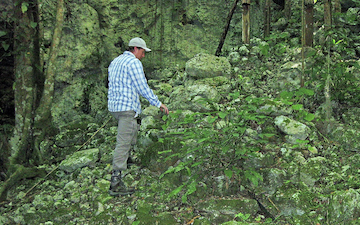
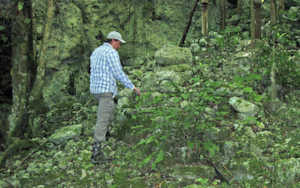

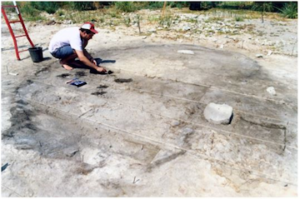
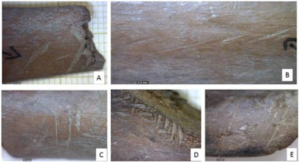

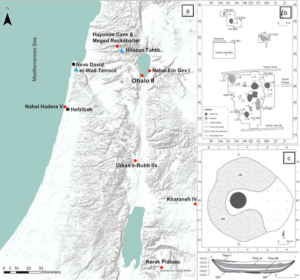


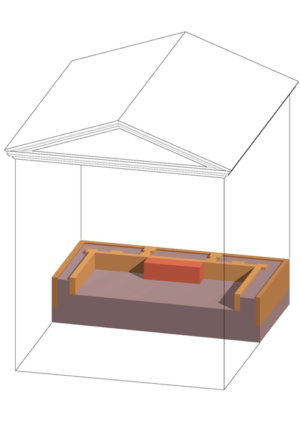

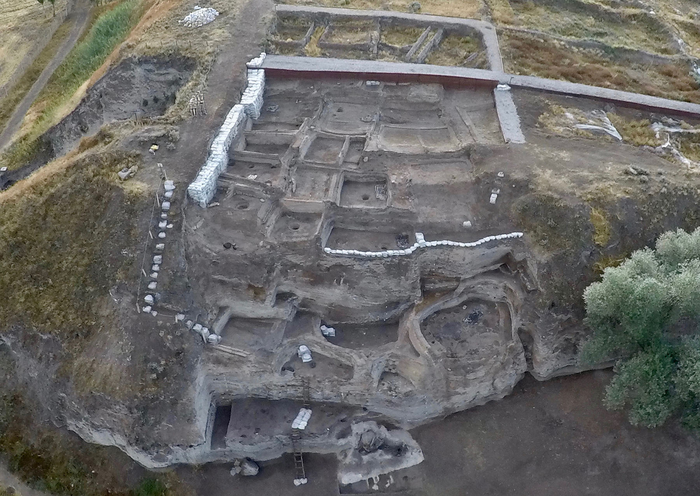
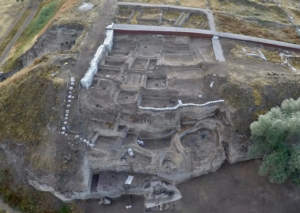
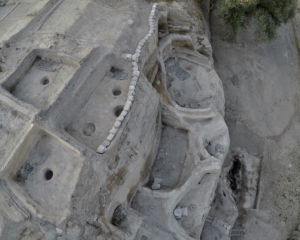
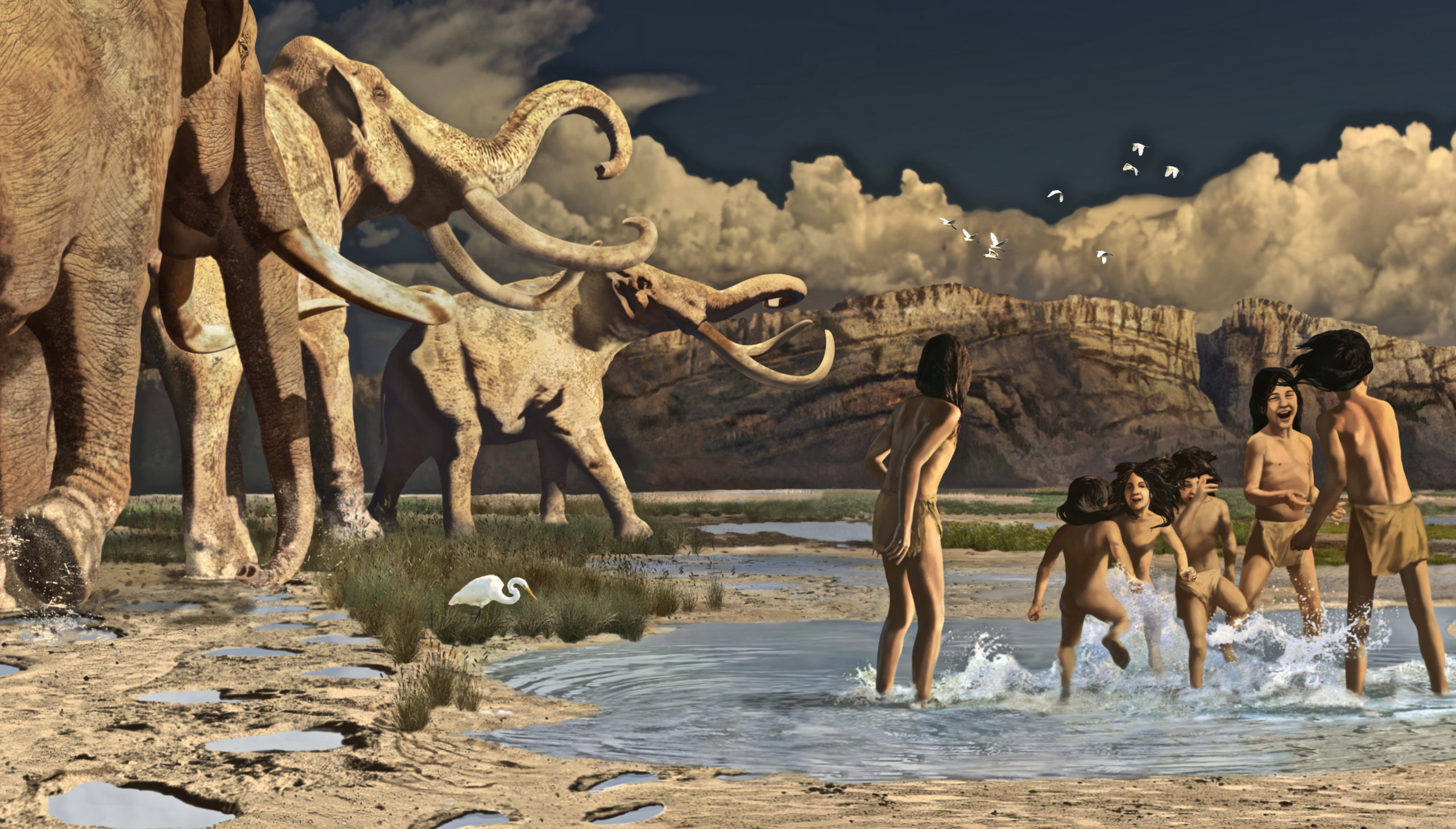

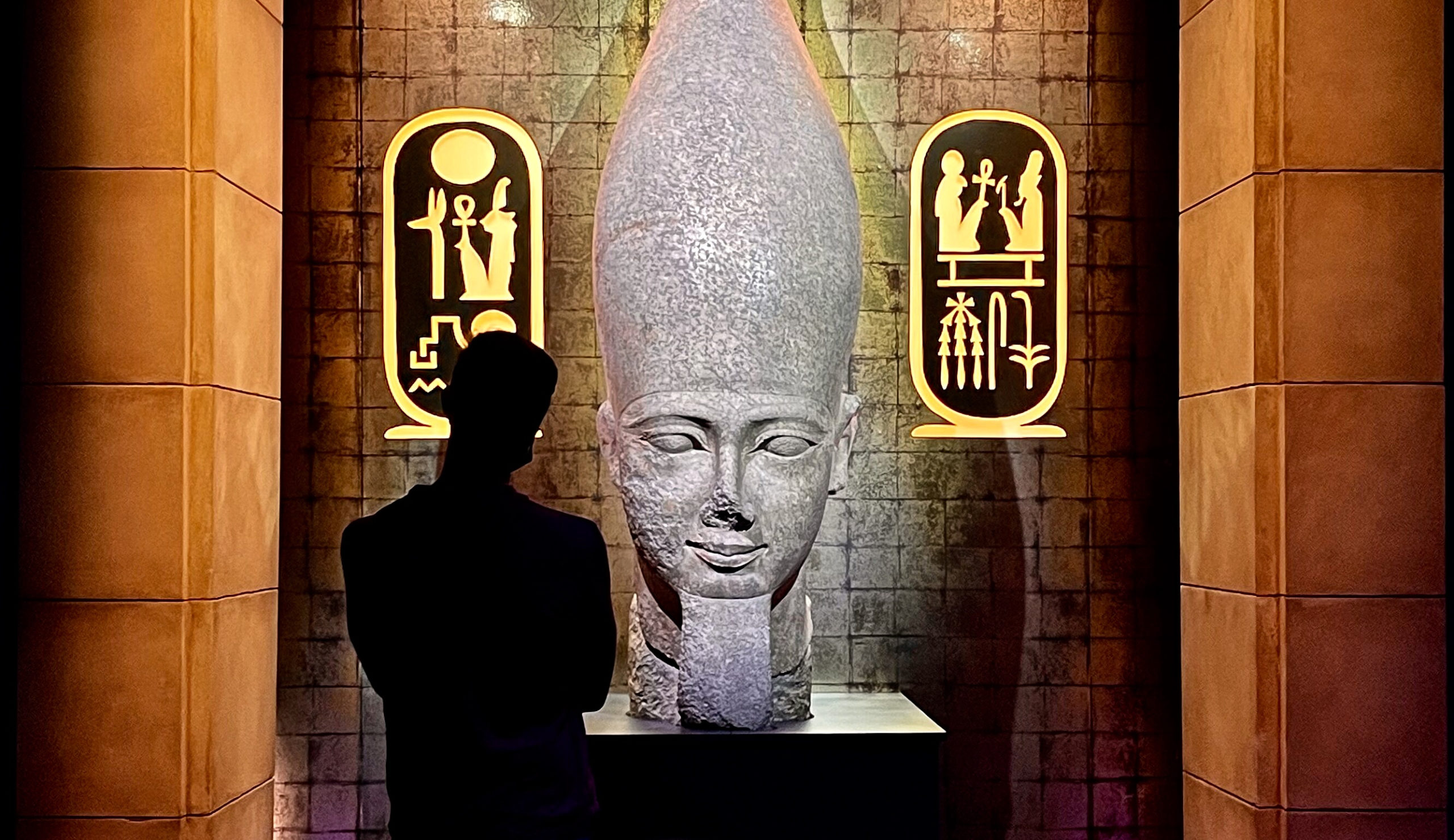
 What is Ramses II’s relevance to us today, when authoritarianism appears to be on the rise and distrust that democracy can truly solve the most pressing problems of our time at an all-time high? Are we at long last beginning to walk away from patriarchy in search of more equitable systems of governance, or will things stay the same as they have for thousands of years?
What is Ramses II’s relevance to us today, when authoritarianism appears to be on the rise and distrust that democracy can truly solve the most pressing problems of our time at an all-time high? Are we at long last beginning to walk away from patriarchy in search of more equitable systems of governance, or will things stay the same as they have for thousands of years? 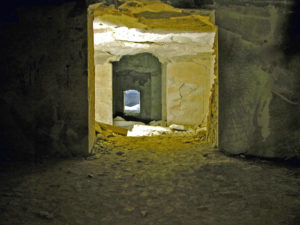
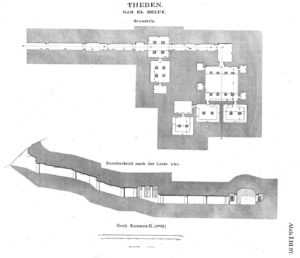




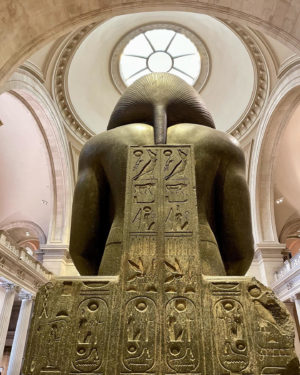
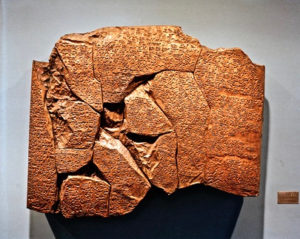
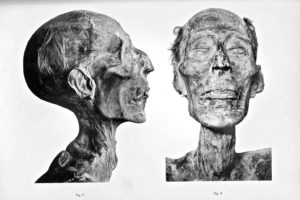
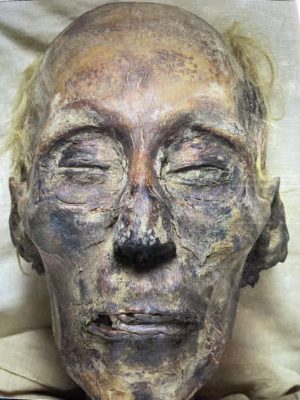
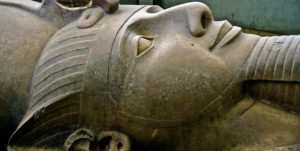
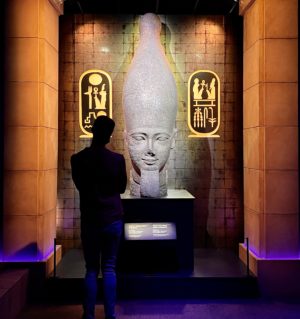 Zahi:
Zahi: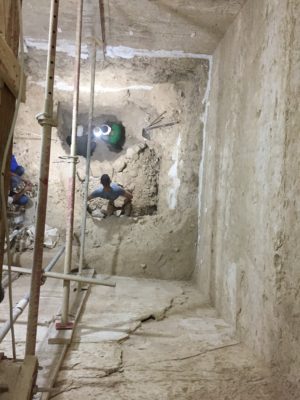
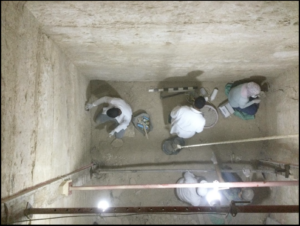
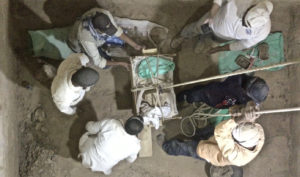


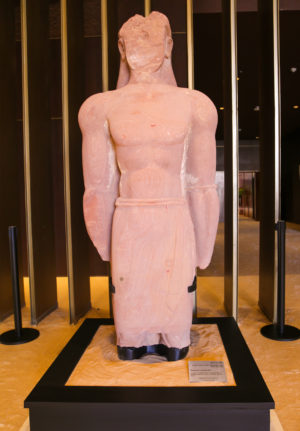 Already, well over 100 archaeologists are working across AlUla during fieldwork seasons and projects, shedding light on many past eras and revealing the depth and richness of AlUla’s cultural heritage.
Already, well over 100 archaeologists are working across AlUla during fieldwork seasons and projects, shedding light on many past eras and revealing the depth and richness of AlUla’s cultural heritage. 
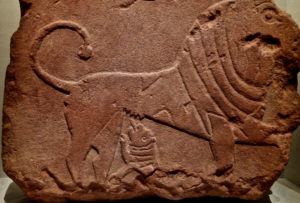
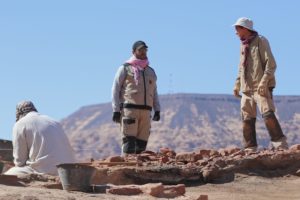
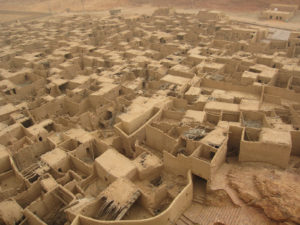




 Montejo sailed west from Hispaniola leaving the brigantine La Gavarra to follow later with reinforcement and landed with three ships and four hundred men on the island of Cozumel off the eastern coast of the Yucatán in September of 1527. The Maya had already met the Spaniards Francisco Hernández de Córdoba in 1517, Juan de Grijalva in 1518, and Hernán Cortés in 1519. The cacique or chief, Naum Pat, greeted Montejo and his men amiably. The chief informed Montejo about the lay of the land on the continent, and the main chiefdoms he would encounter and with which he may have to contend. Toward the end of that month, Montejo sailed to the mainland and came ashore at or near the small village of Xel Há, which he called Salamanca de Xhelhá in honor of Salamanca, his birthplace, making it his main base on the coast. To quell a mutiny that had been brewing since leaving Santo Domingo, Montejo set fire to two of his ships, while the caravel Nicolasa sailed back to Santo Domingo. Thirty sailors from the burned ships who had participated in the frustrated mutiny elected to return. The Nicolasa captain was instructed to bring back supplies, horses, and men.
Montejo sailed west from Hispaniola leaving the brigantine La Gavarra to follow later with reinforcement and landed with three ships and four hundred men on the island of Cozumel off the eastern coast of the Yucatán in September of 1527. The Maya had already met the Spaniards Francisco Hernández de Córdoba in 1517, Juan de Grijalva in 1518, and Hernán Cortés in 1519. The cacique or chief, Naum Pat, greeted Montejo and his men amiably. The chief informed Montejo about the lay of the land on the continent, and the main chiefdoms he would encounter and with which he may have to contend. Toward the end of that month, Montejo sailed to the mainland and came ashore at or near the small village of Xel Há, which he called Salamanca de Xhelhá in honor of Salamanca, his birthplace, making it his main base on the coast. To quell a mutiny that had been brewing since leaving Santo Domingo, Montejo set fire to two of his ships, while the caravel Nicolasa sailed back to Santo Domingo. Thirty sailors from the burned ships who had participated in the frustrated mutiny elected to return. The Nicolasa captain was instructed to bring back supplies, horses, and men. 

